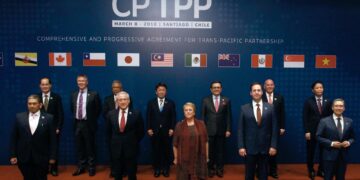Recently announced provincial reimbursement drug lists (PRDLs) provide possible new opportunities for US pharmaceutical companies seeking to expand market reach for their drugs in China. These updated subnational lists largely reflect the national reimbursement drug list (NRDL), which was released by the Ministry of Human Resources and Social Security (MOHRSS) on March 17 for the first time in eight years. However, some PRDLs include potential new openings for drugs that were not among the 300 added to the most recent NRDL update.
Shanxi, Qinghai, Ningxia, Hubei, Sichuan, Guizhou, Hainan, Beijing, Hunan, Shaanxi, Jilin, and Shandong—issued adjusted PRDLs that add or remove NRDL-featured drugs based on certain shared principles. Qualifications for added drugs include products with clinical value; in line with pharmacoeconomics (commonly used, price efficient, and effective); for children; for first-aid and emergency rescue; or for special occupational diseases. Qualifications for removed drugs include products that are unsuitable for local diseases or general disease treatment; over-expensive; for only nutrition or preventative measures; or capable of causing severe adverse reactions. Provinces are expected to begin implementing their lists by the end of the year.
National-level list and negotiations
The NRDL designates medicines covered by insurance schemes that are partially state-sponsored. The 2017 list provides further indication of the central government’s broader strategy for expanding both the scale and quality of drugs offered to citizens. However, China has negotiated deep price cuts on reimbursement with companies to guarantee that these products are affordable and will be prescribed and bought. Price cuts were as high as 70 percent for certain drugs, revealing the government’s challenge to incorporate expensive, high-quality medicines while operating with limited state-sponsored insurance funding.
NRDL drugs are selected into categories A or B, determined by a core group of 200-300 expert physicians, scientists, economists, pharmacists, and medical insurance managers. Category A features essential off-patent drugs, with prices that are non-negotiable. A-list drugs cannot be removed from the NRDL because they are intended to cover basic medicines for at least 90 percent of the Chinese population. These are complemented by category B products, made up of newer-generation drugs that are either patented or have recently expired patents and remain expensive. Unlike their A-list generic counterparts, the prices of category B drugs are negotiable, and MOHRSS permits the national-level expert group to add or remove as many as 15 percent of B-list drugs during each NRDL update..
For the 2017 cycle, China added a group of drugs to the NRDL that is mandated for inclusion into all PRDLs. Announced June 17 for the first time, this separately-negotiated list ran parallel to the NRDL approval process, and includes expensive, high-priority biologics and therapies that treat cancer, diabetes, and heart disease, and have clinical demand for reimbursement. China approved 36 of the 44 drug candidates for this list, two-thirds of which are produced by multinational companies. Seeking to control costs, MOHRSS required the manufacturers of these 36 drugs to accept an average 44 percent price cut on reimbursement in exchange for adding the drugs to the final NRDL.
MOHRSS has issued guiding principles to provincial governments, instructing them to frame provincial lists around the NRDL. These PRDLs also include categories A and B and are determined by provincial-level experts who often participate in the NRDL selection process as well. Provincial expert groups are similarly permitted by MOHRSS to add or remove up to 15 percent of PRDL B-list drugs, but must abide by pre-set procedures that can be different within each province. Because MOHRSS has instituted a pressing timeline for PRDL implementation, some provinces have created lists that are largely, if not entirely, identical to the NRDL.
Desire for drug list selection process reform
Some US companies have expressed interest in reforming the process for determining national and provincial lists. The government gives expert groups full autonomy to decide which drugs will be included on final lists; however, the exact process for selecting these drugs is fairly opaque. In addition, the current structure forbids direct industry consultation with expert groups during the period of drug list creation at both the national and provincial levels. US pharmaceutical manufacturers seek more direct interaction with these groups to improve transparency and to enable company experts to properly advocate the unique benefits of their drugs.
David Solomon is a Business Advisory Manager for the US-China Business Council, a private, nonpartisan, nonprofit organization of more than 200 American companies that do business with China.





























